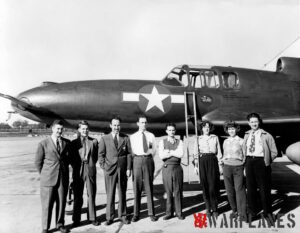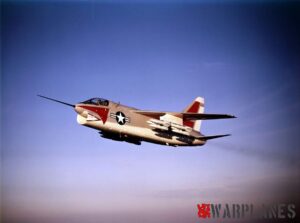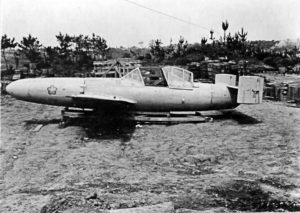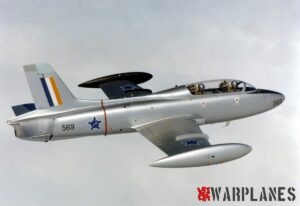Lockheed XF-90
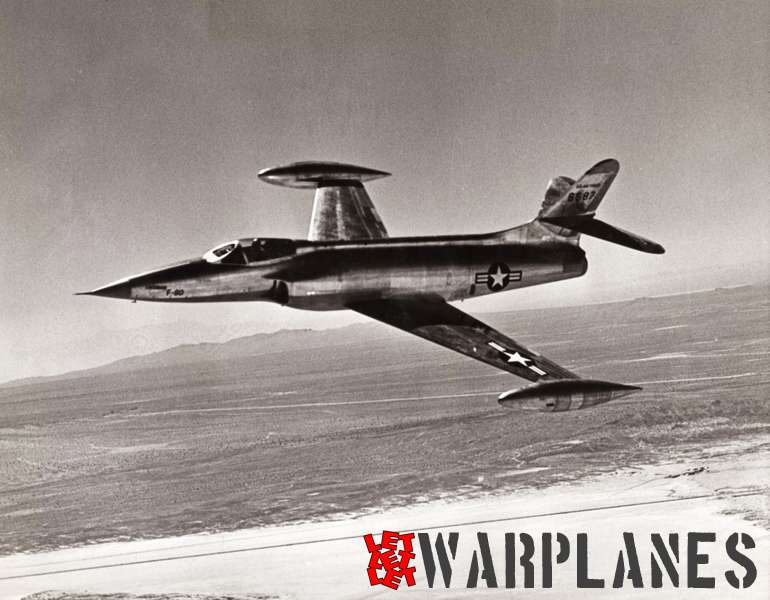
Introduction
As reaction on the U.S.A.F. specifications for a long-range deep penetration fighter, Kelly Johnson’ s team at Lockheed designed in 1945 Model 153. For aerodynamic investigation of the final configuration a number of flying scale models with various wing configurations were launched from a P-38 Lightning at 10,000 m altitude. The final shape of the new fighter was presented in 1947 to the U.S. Air Force when the mock-up was inspected. After this inspection the air force ordered two flying prototypes under the type designation XP-90, later to be changed in the new F-type XF-90. The assigned serial numbers were 46-687 and 46-688. What Kelly Johnson’s team had designed was a for that time very futuristic looking twin-engine aircraft equipped with very thin swept wings and a sharply pointed nose. Fitted with two wingtip tanks containing 833 liters of fuel each, groups of operational F-90’s had to operate independently far behind enemy lines as a fighter-bomber and ground attack plane. In other words, the task of the F-90 was more or less dictated by an expected large-scale invasion of Soviet troops of central and Western Europe as a typical early product of Cold War thinking!
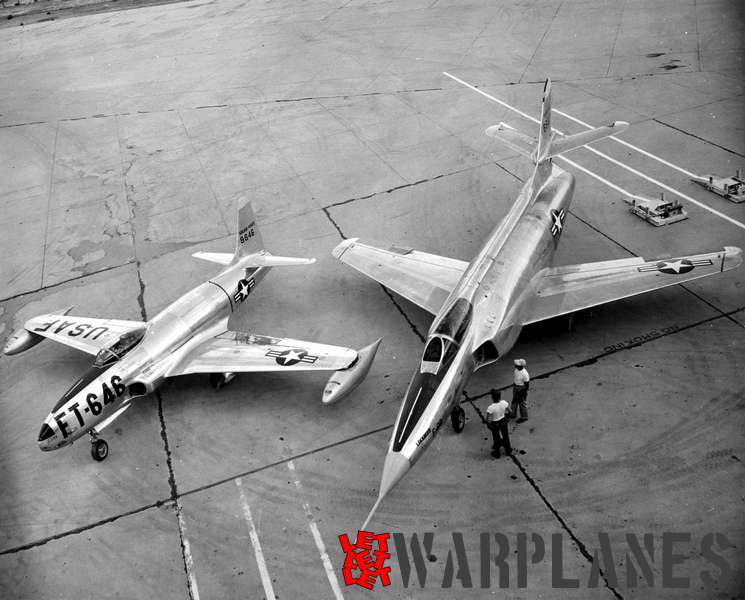

Flight evaluation
The XF-90 was designed to offer maximal chances of survival when under enemy fire using much thicker aluminum skin than usual. In spite of this, extensive armoring was not used because this would increase the total weight. Such types of aircraft carrying much internal and external fuel and loads for a long range had to be of course at some point a compromise. Biggest problem of that time was that even the most powerful jet engines did not offer sufficient thrust to give an airplane of that size with a high all-up weight good performances. Using afterburners was a solution, but with as penalty an excessive fuel consumption. In spite of these problems Kelly Johnson and his team did their very best to solve this.
The first XF-90 made its maiden flight on 4 June 1949 with Lockheed test pilot Tony Levier at the controls. Both XF-90 prototypes were extensively tested without too much problems.
To improve flight performance, afterburners were fitted to the jet engines. Initially, only the second XF-90 was fitted with these afterburners. Later the first prototype was also retro-fitted with afterburners under the changed type designation XF-90A. Except flight performance testing, also armament trials were conducted. Both bomb dropping experiments and ground-firing tests with the six 20mm guns were made with good results. The flight characteristic of the big and heavy fighter were in general described as good, although it was slightly underpowered with the available jet engines of that period. In a shallow dive, the XF-90 was found to be able to reach with Mach 1.2 speeds in excess of the sound. Unfortunately for Lockheed, the XF-90 became second in a number of comparative trials against the McDonnell XF-88. However, also the XF-88 would not be ordered for mass production. With the large-scale introduction of in-flight refueling as standard operation procedure, the need for a fighter-bomber with a big and heavy internal fuel storage was no longer required. It must be remarked there was a third contender in this long-range penetration fighter project: North American introduced their YF-93A fighter based on the F-86 Sabre. Development of this type was soon abandoned after two prototypes had been tested.
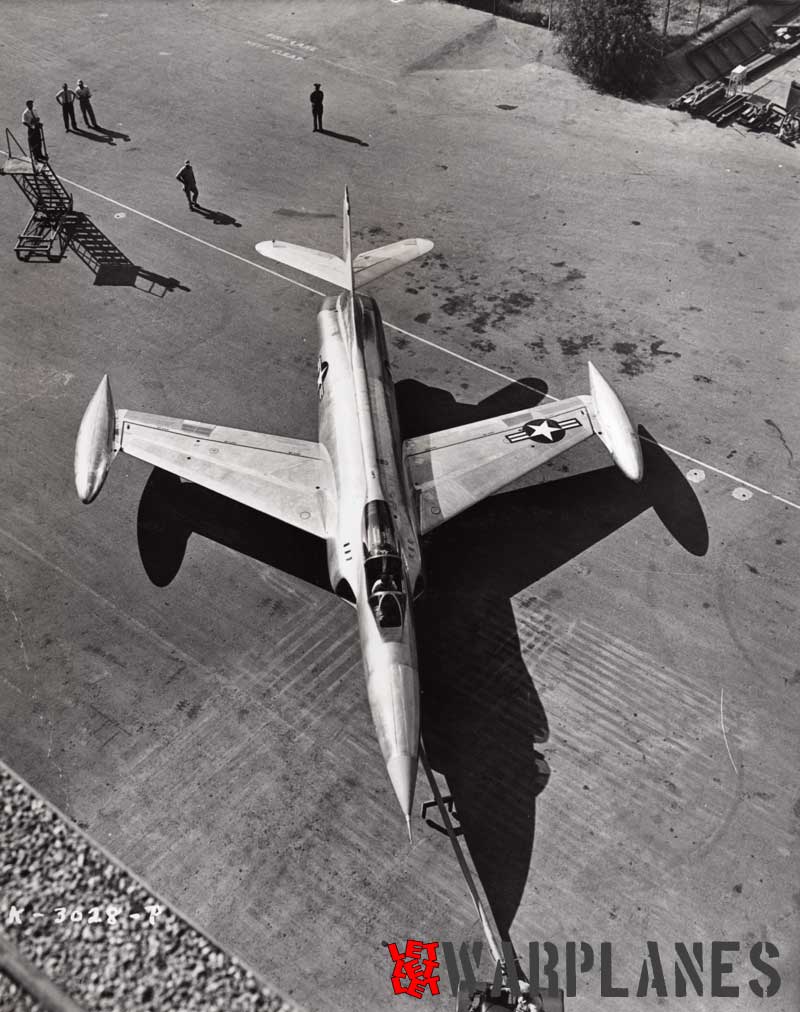
Disposal
The first XF-90 was handed over to the NACA at Cleveland (the current NASA Glenn Centre) as a high-speed test plane. Because it was no longer in an airworthy condition, it was used for structural testing until destruction. The second XF-90 was transferred to the nuclear test site of Frenchman Flats in the Nevada desert to observe the effects of nuclear blasts on the airframe. In February 2002 it was ‘rediscovered’ in quite intact state. It seemed to have survived the nuclear tests quite well. The plane was dismantled by people in special suits protecting them against radiation. After cleaning of radioactivity it was transported to the U.S.A.F. museum at Dayton Ohio for further restoration for permanent display.
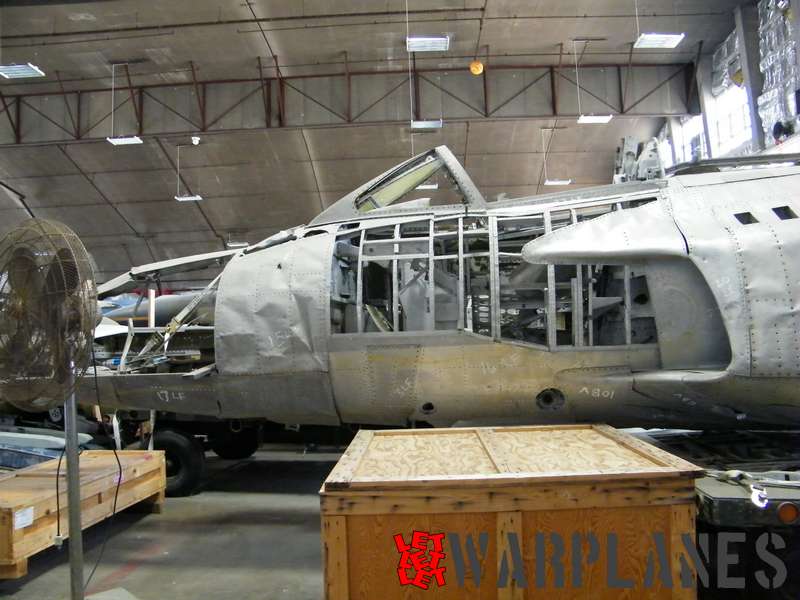
Technical details
Power plant: two Westinghouse J34-WE-11 jet engines of 1633 kg thrust each (1905 kg with afterburner)
Sizes: wingspan 12.19 m
length 17.08 m
height 4.80 m
wing area 32.05 m2
Weights: empty weight 8165 kg
loaded weight 12,202 kg (maximal 14,016 kg)
Performances: max. speed 1075 km/h at 3050 m
service ceiling 11,887 m
range 1690 km
Armament: six 20 mm cannons grouped in three under each air intake. In general weapons were only fitted when needed for testing.
Accommodation: pilot only
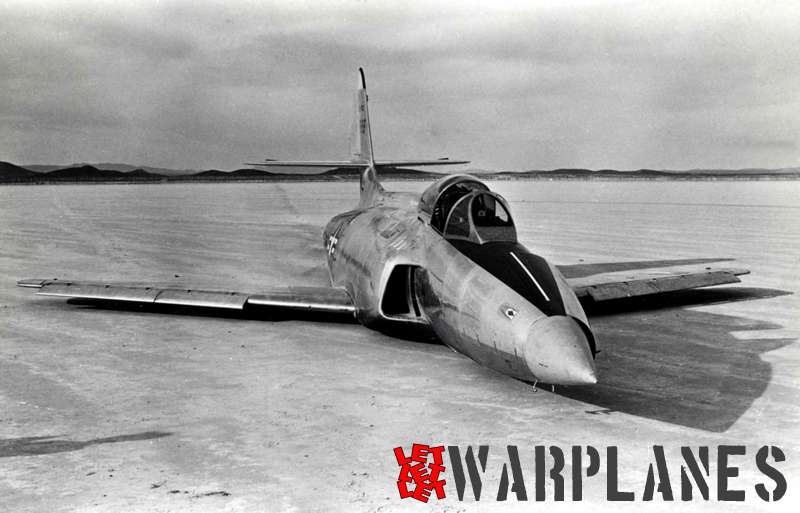
Models, Markings and Colour schemes
The XF-90 never was very popular amongst the model kit manufacturers. In spite of this Lindberg released some 60 years ago a range of U.S. fighter prototype kits at 1:48 scale that included also the XF-90. Lucky for the model builders there was in the late seventies/early eighties of the last century a re-release of these kits in the Lindberg Classic Replicas series. Although quite primitive to present-days standards these models were fairly accurate in general outline and with some luck you still can find one at aviation fairs/model-builders events. At 1:72 scale Anigrand has released a limited-production XF-90 resin kit. Both prototypes flew in a bare metal scheme with only a dark grey anti-glare panel in front of the cockpit. Markings were only the U.S. standard insignia with the registration number and ‘U.S Air Force’ in small lettering on top of the vertical tail. As far as known, only the first prototype carried on its nose the Lockheed company logo with ‘F-90’ in black.
Nico Braas
References:
-Anonymous, Deep Penetration, Flying Flops!-Air Classics Special Edition Vol. 1 1990
-René J. Francillon, Lockheed aircraft since 1913, Putnam, 1987
-Lloyd Jones, U.S. Fighters, Army Air Force 1925 to 1980s, Aero Publishers, U.S.A., 1975
-Jay Miller, Lockheed’s Skunk Works. The first fifty years, Aerofax Inc. U.S.A., 1993






